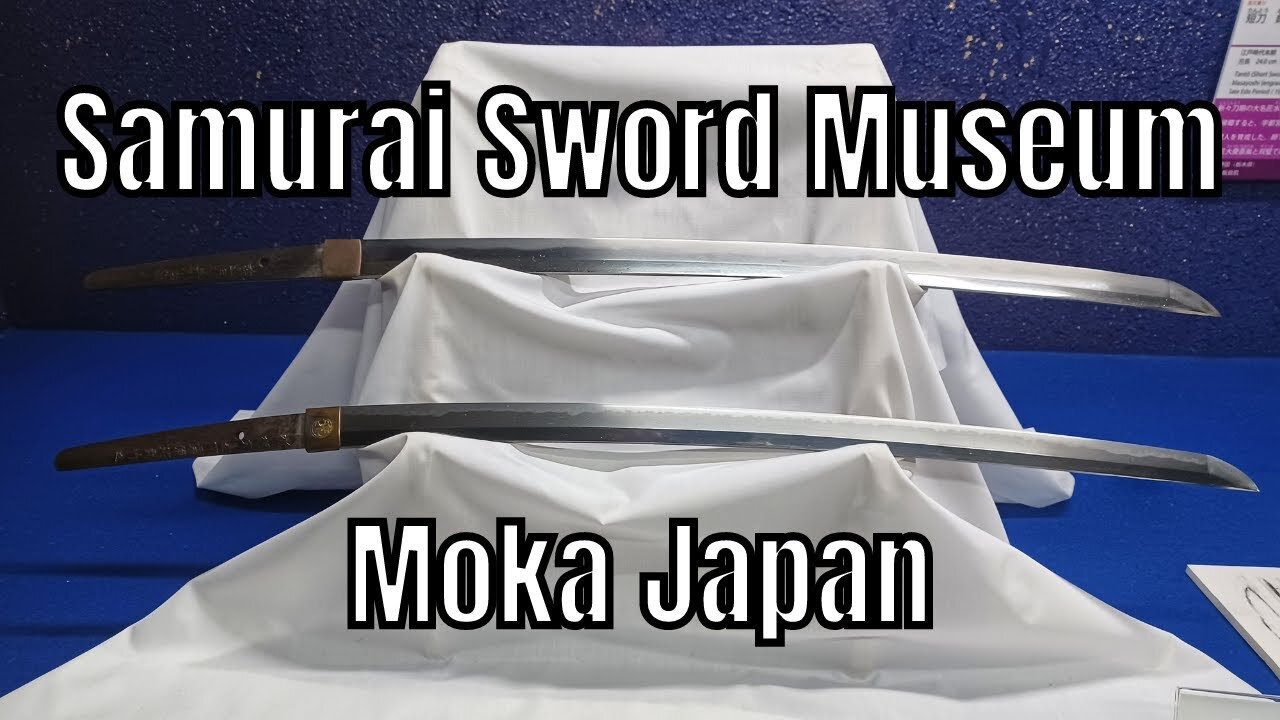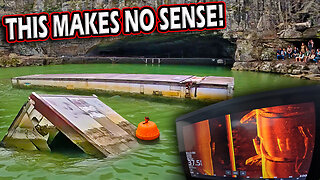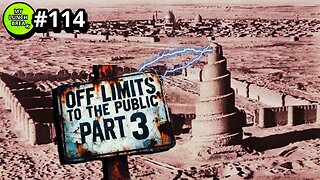Premium Only Content

A History of Japanese Swords - Samurai Sword Museum, Moka Japan
Located on the border of Tochigi and Ibaraki prefecture it is a small unassuming museum. A blue sign, a small parking lot, ut inside an impressive collection.
The Samurai Sword Museum has an entrance fee of just 1000 yen. About once a month they have a day where you can handle swords.
The only complaint I had about the museum is that things are not in any type of order so I am changing up the order of exhibits.
The most famous Japanese sword is the katana, however, we first have to get to that. Jokoto are the ancient swords that were made before 900 AD. The first Japanese swords did not fit what we think a Japanese sword looks like. We expect a curved single-edged sword.
The first Japanese swords were straight swords. the Tsurugi was the first one. A double-edged sword it was cast in bronze during the Yayoi period and made from iron in the Kofun period to the Heian period. It is also the type of sword that is carried by Fudo Myoo and Yamato Takaru
Next came the Chokutō a straight single-edged sword. The Tsurugi was cast but the Chokuto was forged like the Japanese swords we think about. the Chokuto was first seen in the Kofun period and we think was mostly used on foot
It was in the Heian period that we start to see curved swords. This might have been due to horses being used more in warfare and influence of the Emishi people's blades. The Emishi themselves had a reputation for being fearsome horse warriors.
In the Heian period strait swords dye out and we have a new sword evolved, the Tachi. No, we are not to the katana yet. The Tachi is a curved, single-edged sword that we would recognize as being a Japanese sword. This is also where the museum starts to have more examples.
The Tachi was worn blade down and hung from the waist. This meant that the name of the smith would be on the right side of the blade. It was intended mostly as a cavalry sword. the Tachi blade was in turn improved from studying swords damaged and destroyed in battle with the Mongolians.
The katana developed as samurai carried longer weapons. It started as a shorter weapon than the Tachi that could be drawn faster and used as a secondary weapon. The first katanas appeared in the Northern and Southern Court period. The oldest known katana is at Kasuga Shrine.
The Sengoku period saw the katana flourish as large-scale fighting broke out, and non-samurai warriors from the farmer class called Ashigaru became common. These farmer soldiers used lent weapons like katana, spears, and guns.
The period also saw multiple sword hunts as competing rules intended to pacify the nation and secure their position. The peaceful Edo period saw increased trade and less warfare. Regional differences in the sword schools faded as swords became more and more of a decoration and received more focus as the weapon of the samurai. Increased policing, class-based restrictions on weapons ownership and rules about where you can carry swords also led to an increase in "less than lethal weapons".
The Edo period saw the artistic side of the katanas flourish with more elaborate fittings. The end of the Tokugawa era saw katanas get shorter and straiter as they were used frequently at close quarters and inside buildings by supporters of the shogunate and the emperor to fight each other. In the Meiji era laws on swords grew stricter again to limit swords to the government and remove arms from potential dissidents.
At this point, military swords in Japan moved to more western-style fittings and designs. This changed again in the 1930s when nationalism and a renewed interest in tradition when military swords went back to a traditional katana design for both officers and non-commissioned officers. Some of these blades were family blades refitted with the new fittings but mos were new machined blades. The museum has some of the fittings of some. These machined blades are popular collector items outside of japan but are illegal inside japan.
In summary, due to the way the laws are written in Japan swords are illegal but there is an exception for registered traditionally manufactured blades. New blades have to be produced by a certified smith and they are limited in how many they can make. In summary, even if you are certified to make blades (after 5 unpaid years of apprenticeship, passing a once-a-year 8-day test, and the start-up money) it is hard to make a living from doing it. And of course, there are other crafts needed like scabbard makers, polishers, and handle wrappers that are needed for the finished product.
The Samurai Sword Museum has a large collection of swords on display from a range of periods, and also a few non-japanese ones. In addition, they have a large collection of armor and other artifacts.
Samurai Sword Museum, Moka Japan
Facebook: https://www.facebook.com/samurai.sword.museum.japan/
Twitter: twitter.com/Samurai_Museum
-
 1:03:41
1:03:41
Man in America
18 hours agoAre Trump & Musk the COUNTER-ELITES? w/ Derrick Broze
84.3K75 -
 3:45:08
3:45:08
DLDAfterDark
9 hours ago $10.77 earnedDLD Live! SHTF Handguns! Which Would You Choose?
46K2 -
 1:50:38
1:50:38
Mally_Mouse
12 hours agoSaturday Shenanigans!! - Let's Play: Mario Party Jamboree
55.8K -
 1:13:00
1:13:00
Patriots With Grit
16 hours agoWill Americans Rise Up? | Jeff Calhoun
46.2K13 -
 14:55
14:55
Exploring With Nug
16 hours ago $11.56 earnedWe Found Semi Truck Containers While Searching for Missing Man!
62K9 -
 27:57
27:57
MYLUNCHBREAK CHANNEL PAGE
23 hours agoOff Limits to the Public - Pt 3
142K69 -
 38:07
38:07
Michael Franzese
16 hours agoLeaving Organized Crime and Uncovering Mob in Politics: Tudor Dixon and Michael Franzese
111K15 -
 2:42:54
2:42:54
Jewels Jones Live ®
2 days agoAMERICA IS BACK | A Political Rendezvous - Ep. 111
86.9K50 -
 8:47:33
8:47:33
Due Dissidence
1 day agoLIVE: Workers Strike Back Conference ft. Chris Hedges, Jill Stein, Kshama Sawant, and More!
123K92 -
 8:36:37
8:36:37
Right Side Broadcasting Network
5 days agoLIVE REPLAY: CPAC 2025 Day Three with President Donald J. Trump - 2/22/25
471K104